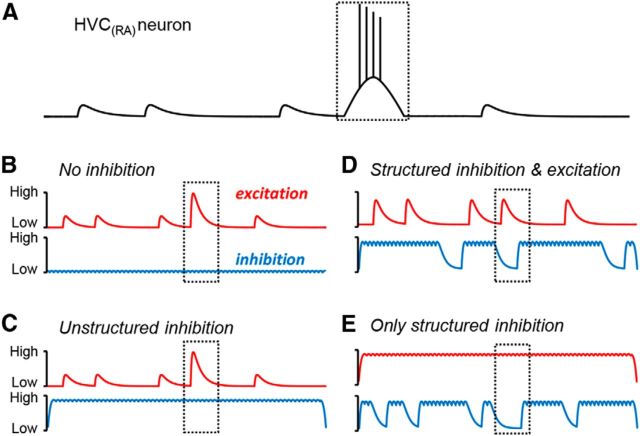Figure 1.
Models of synaptic conductances contributing to song-related activity in HVC. A, During singing, HVC(RA) neurons typically exhibit one high-frequency burst of spikes as well as multiple depolarizing synaptic events. A dashed box is used to indicate the occurrence of a burst event across all panels. Several models have been proposed to explain this behavior. B, C, Activity may be exclusively driven by excitation, with inhibition either absent (B) or lacking the temporal structure required to contribute directly to motor patterning (C). D, E, Nonuniform inhibition may contribute directly to activity during singing. D, Bursts could result from excitatory events that are temporally aligned with local minima in inhibition, whereas excitatory events in the presence of inhibition remain subthreshold. E, Inhibition could act as a filter in the presence of global excitation such that short gaps in inhibition result in depolarizations and longer inhibitory pauses can be sufficient to trigger a burst.

